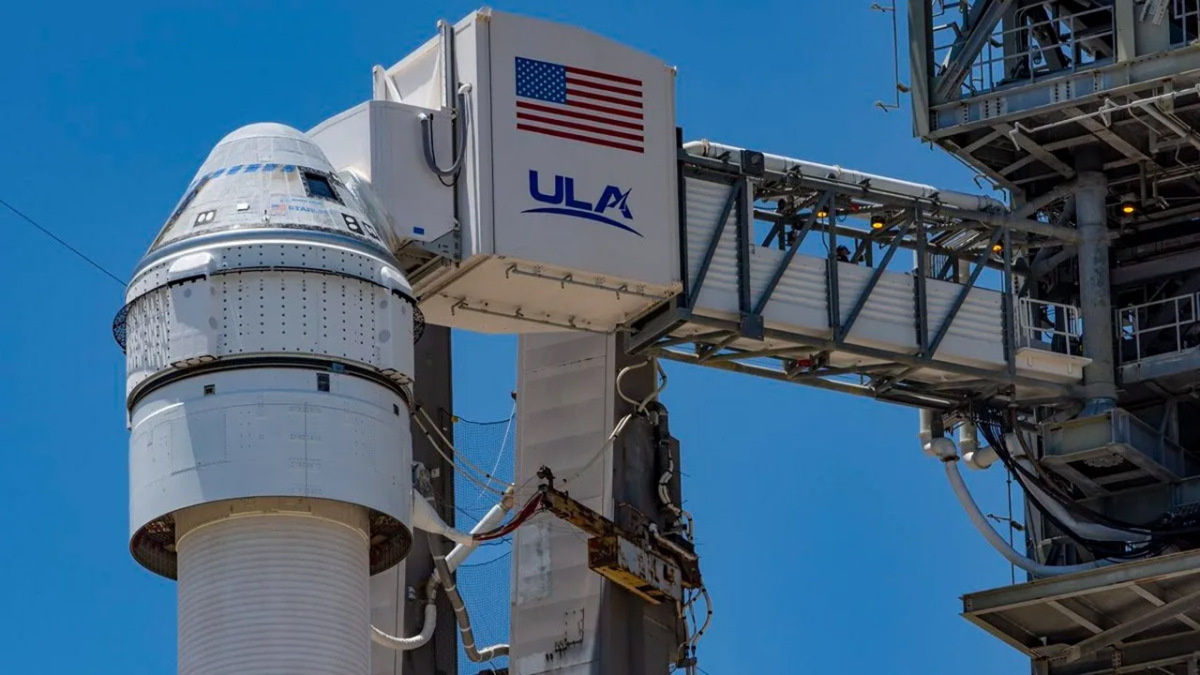Boeing and NASA are moving ahead with the upcoming Starliner demonstration launch despite an active helium leak. The launch is now on the books for Saturday, June 1, at 12:25 p.m. EDT. If all goes as planned, Starliner will rendezvous with the International Space Station the following day and return to Earth on June 10. If not, it will be another embarrassing setback for Boeing’s troubled spacecraft.
Technicians discovered helium escaping from the fuel system earlier this month after valve issues caused NASA to halt the last launch attempt. NASA said in a recent news conference that the extremely slow leak does not pose a danger to the spacecraft. This is based on an exhaustive inspection of Starliner, which was removed from the launchpad along with the Atlas V so the valve in ULA’s rocket could be swapped. It was then that the team noticed the helium leak in Starliner.
Even though the optics of launching with an active leak aren’t ideal for the troubled Boeing craft, NASA says engineers have done their due diligence during this multi-week pause. Every space launch has risk tolerances, and NASA has judged this one to be in bounds. Helium is a tiny atom that is difficult to fully contain—even the highly successful SpaceX Dragon has occasionally flown with small leaks. While helium is part of the propulsion system, this inert gas is not used as fuel. Helium is used to pressurize the system and ensure fuel is available to the spacecraft’s four “doghouse” thruster assemblies and the launch abort engines.



I distinctly remember growing up hearing there’s not even a .01% margin for error on spacecraft. That they must be so durable to withstand the conditions of leaving/reentry and the shuddering vibrations. I realize it’s different, but the big fear is always having another Challenger. Challenger didn’t just break up, it exploded into 2 pieces on national television. " teacher going to space" had a TV in every classroom across the country watching it.
Helium seems used in the modern rocket to keep hot gas pipes separate from cold liquid fuel. 3 minutes before launch the system is charged and maintained by ground, just before ignition it’s disengaged and the system has to support itself. The helium on board only needs to stay pressurized for the 7 minutes or so it takes before the thrusters are spent, and purged, and that’s why they don’t view it as an issue. But still sounds like fuckass Boeing being ok gambling with lives while NASA shrugs - again.
Valentina Tereshkova was the first woman in space, orbiting the Earth in a Soviet capsule in 1963.
Sally Ride was the first American woman in space, as a part of STS-7 in 1983.
The Challenger Disaster took place during STS-51-L in 1986.
Christa McAuliffe, who was chosen as part of NASA’s Teacher in Space Project, was never a nominee for any “first woman in space” acknowledgements.
Didn’t mean to be so incorrect (off by 23 years) there was some kind of accolade for her, maybe it was just being a teacher? I’ll fix the post tho
First civilian
Removed by mod
Removed by mod